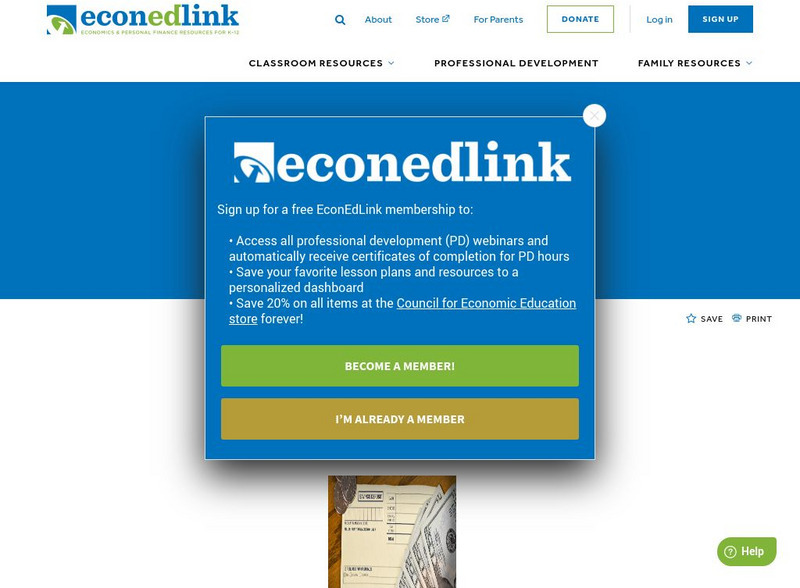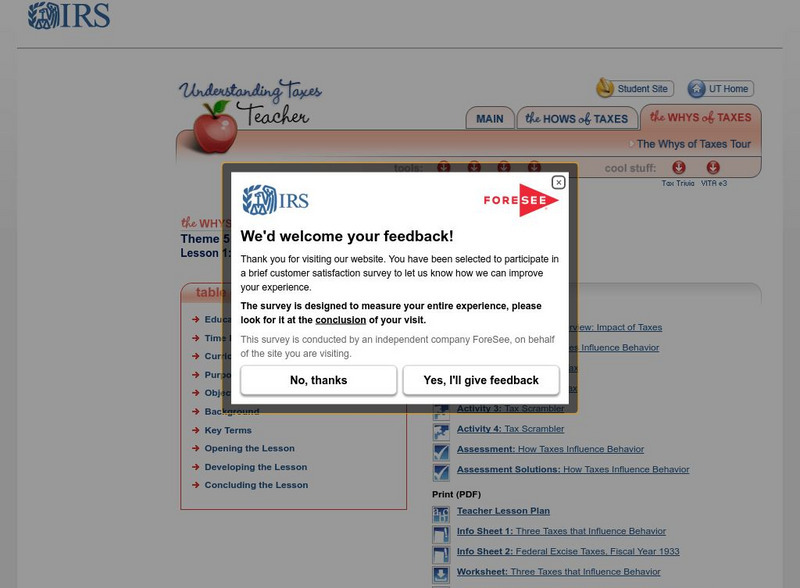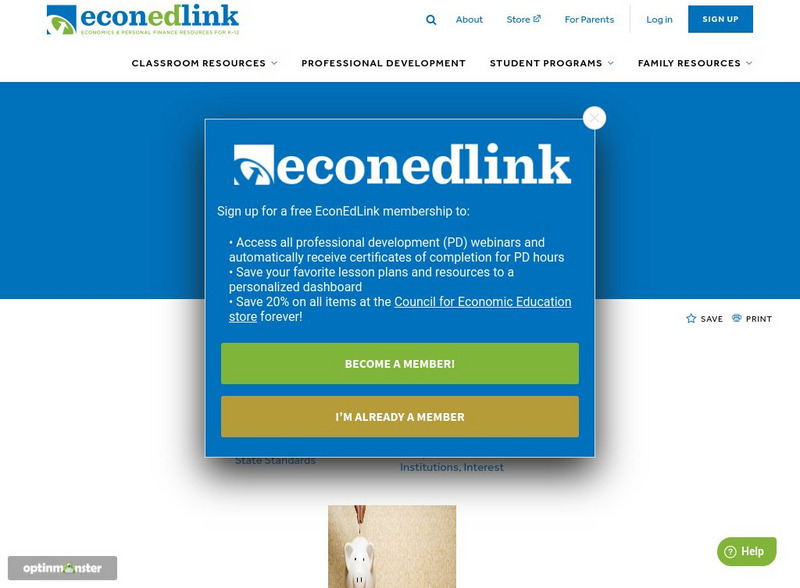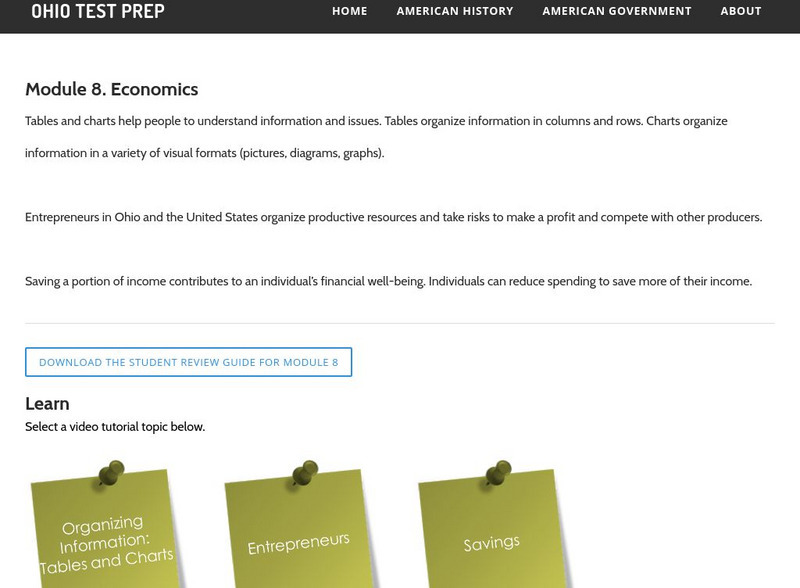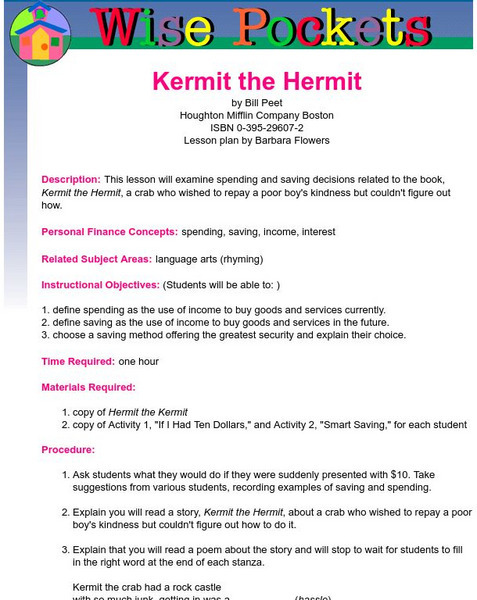Hi, what do you want to do?
Practical Money Skills
Practical Money Skills: Lessons: Grades 3 6
Four fiancial literacy lessons on allowances, money responsibility, saving, and comparison shopping. Lessons can be evaluated separately or as a group.
Practical Money Skills
Practical Money Skills for Life: Lesson Plans
A series of financial literacy lesson plans broken out by grade range for grades from Pre-K through college, with an additional set of lessons created for students with special needs.
Scholastic
Scholastic: Adventures in Math: Lesson 2: Saving Money by Finding the Better Buy
Students will be able to make economically sound purchasing decisions by using unit pricing, calculating discounts, and analyzing fixed and variable costs.
Better Lesson
Better Lesson: Loans and Savings
What are loans and how do they work? How do banks encourage people to save money? Students work on these questions in the context of the College Project.
Federal Reserve Bank
Federal Reserve Bank of St. Louis: Less Than Zero [Pdf]
This lesson accompanies a story by Stuart J. Murphy called Less Than Zero and teaches students about how to manage their money by saving it and setting goals for themselves.
Learning to Give
Learning to Give: Spend, Save or Donate
This lesson will introduce vocabulary terms spend, save and donate. As a class, they will discuss, sing and perform the song "You Can Bank on Me. " The students will learn reasons that people choose to donate.
Goodwill
Gcf Global: Assessing How You Manage Money
This lesson examines how to manage your money safely.
Other
Treasury Direct: Money Math: Lessons for Life: Math and Taxes:a Pair to Count On
Students have the opportunity to see how the money they earn is dependent, to a great extent, on the education they gain, by examining occupations and salaries. They then will use pay stubs and tax tables to learn what happens to the...
Other
Ucce: Money Talks
This resource provides activities such as: savings video, youth money newletters, financial literacy games, related links, and a teacher section.
Other
Finra Investor Education Foundation: Introduction to Earning Interest 11 & 12
Students will know and be able to use the formula for calculating compound interest and understand the effect of compounding on savings in this lesson.
Council for Economic Education
Council for Economic Education: Learning, Earning, and Investing
This course is subtitled "Lessons for a New Generation." It includes twenty-one downloadable lessons with additional activities for each lesson. It covers a wide range of topics from basics such as "Why Save?" and "Invest In Yourself" to...
Practical Money Skills
Practical Money Skills: Lessons: College
Ten financial literacy lesson plans allow college students to build on their skills and cover topics such as budgeting, living on your own, managing credit cards, cars and loans, and saving and investing.
Council for Economic Education
Econ Ed Link: Banks, Bankers, Banking
This lesson is a simulation of opening a bank. Students are assigned various roles to play within the banking business. Students learn about the role banks play in a market economy.
Internal Revenue Service
Irs: How Taxes Influence Behavior Lesson Plan
This lesson plan will help students understand how taxes may influence the way people spend and save their money.
Council for Economic Education
Econ Ed Link: Climbing the Savings Mountain
Check out this lesson plan to learn how to develop a savings plan that is right for you.
University of Missouri
University of Missouri: Wise Pockets: Berenstain Bears' Trouble With Money
Using a Berenstain Bears' book, students are introduced to concepts such as spending, goods, services, income, saving, and interest. Lesson is detailed and has good activities. Includes questions about the story that teach students about...
Federal Reserve Bank
Federal Reserve Bank of Atlanta: Saving and Investing
Explains the Rule of 72 with examples of compound interest and its power to help grow students' money.
Other
Finance Authority of Maine: Cash and Max: Look at All the Things Max Will Learn
A PDF coloring book for early elementary students provides basic lessons about earning and saving money.
Council for Economic Education
Econ Ed Link: Big Banks, Piggy Banks
Use this informative economics lesson plan. Find out how to save your money. "You will read about safe places for keeping money; you also will learn about places where money can earn money."
Other
The Mint: Take the Spending Challenge
This is an interactive game in which students are given an allowance and opportunities to spend money with friends They must make decisions on what to buy, whether to pay cash or with credit, or to save.
Scholastic
Scholastic: Adventures in Math: Lesson 4: How to Use Your Money
For this lesson, students will identify why having a budget and keeping records of their spending and saving habits helps them make better financial choices.
Ohio Test Prep
Ohio Test Prep: Module 8: Economics
Learning module prepares students for the state test in Social Studies Economics portion, including organizing information with Tables and Charts, Entrepreneurs, and Saving. Lesson includes video tutorial, interactive review games, and...
Council for Economic Education
Econ Ed Link: We Are Consumers and Producers
This lesson plan is geared toward beginning economics concepts. "In this instructional activity you are going to learn more about how you and others are consumers and producers."
University of Missouri
University of Missouri St. Louis:wise Pockets: Kermit the Hermit
This is an elementary level instructional activity that deals with spending, saving, income, and interest. Requires the book Kermit the Hermit by Bill Peet. Includes detailed lesson plan along with procedures and activities.











